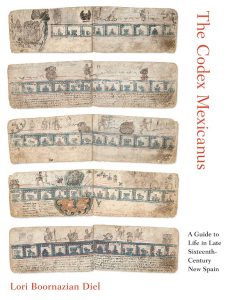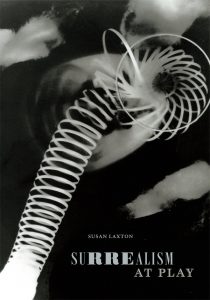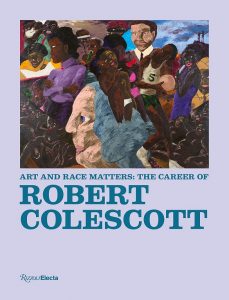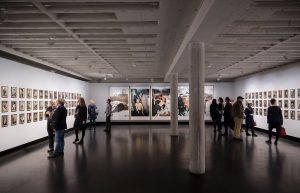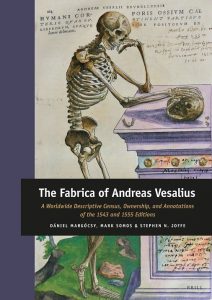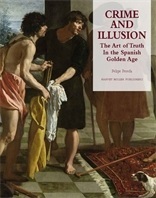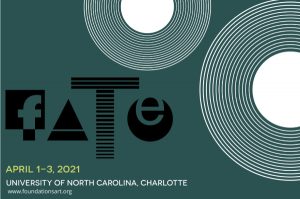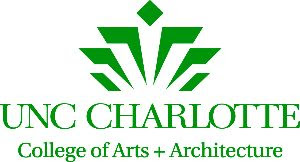CAA News Today
Deadlines extended! Serve on a CAA Committee or Editorial Board
posted Jan 27, 2020
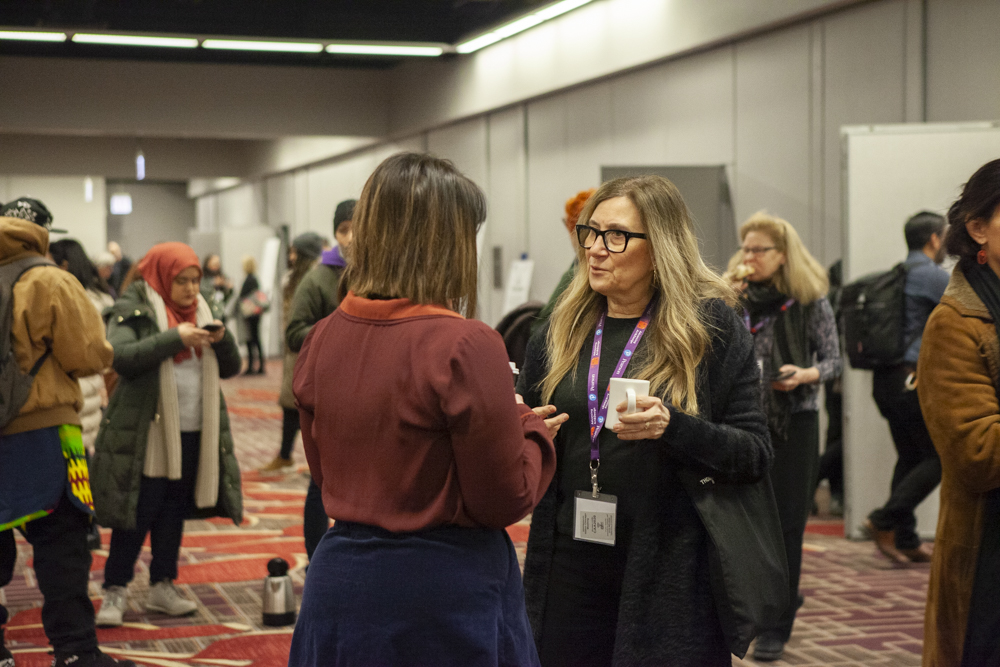
Attendees at the 2020 Annual Conference in Chicago. Photo: Stacey Rupolo
Each spring, members have the opportunity to provide crucial service to the field and gain an inside view by volunteering to work on a CAA committee or editorial board.
Any member may self-nominate for the following positions or (after ascertaining interest) nominate another member. For more information, please click on the links below.
CURRENT OPPORTUNITIES
Art Journal—Editor-In-Chief
Deadline (extended): June 1, 2020
caa.reviews—Field Editor for East Asian Art
Deadline (extended): June 1, 2020
Publications Committee—Two Members
Deadline (extended): June 1, 2020
PAST OPPORTUNITIES
Art Journal / Art Journal Open (AJO) Editorial Board—Three Members
Deadline: April 15, 2020
The Art Bulletin Editorial Board—One Member
Deadline: April 15, 2020
The Art Bulletin—One Reviews Editor or Coeditor Team
Deadline: April 15, 2020
caa.reviews Editorial Board—Three Members (One an Emerging Professional)
Deadline: April 15, 2020
caa.reviews—Eight Field Editors
African Art, African Diaspora/African American Art, Architecture and Urban Planning, Asian Art, Contemporary Art, Exhibitions: East Coast, Exhibitions: Midwest, Exhibitions: West Coast
Deadline: April 15, 2020
New in caa.reviews
posted Jan 24, 2020
Delia Cosentino reviews The Codex Mexicanus: A Guide to Life in Late Sixteenth-Century New Spain by Lori Boornazian Diel. Read the full review at caa.reviews.
Natalie Dupêcher discusses Susan Laxton’s Surrealism at Play. Read the full review at caa.reviews.
Jessi DiTillio writes about the exhibition catalog Art and Race Matters: The Career of Robert Colescott, edited by Raphaela Platow and Lowery Stokes Sims. Read the full review at caa.reviews.
News from the Art and Academic Worlds
posted Jan 22, 2020
|
|
|
|
|
Want articles like these in your inbox? Sign up: |
New in caa.reviews
posted Jan 17, 2020

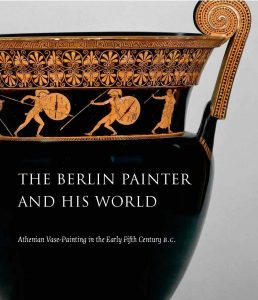
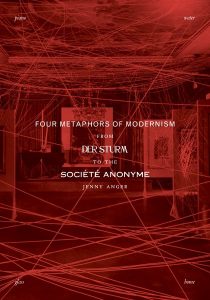
Joyce S. Cheng discusses The Forces of Form in German Modernism by Malika Maskarinec. Read the full review at caa.reviews.
Nikolaus Dietrich reviews The Berlin Painter and His World: Athenian Vase-Painting in the Early Fifth Century B.C., edited by J. Michael Padgett. Read the full review at caa.reviews.
Max Koss writes about Jenny Anger’s Four Metaphors of Modernism: From Der Sturm to the Société Anonyme. Read the full review at caa.reviews.
CAA Affiliate ACSAA Condemns the Assault on Democratic Institutions and Intellectual Freedoms in India
posted Jan 17, 2020
The American Council for Southern Asian Art (ACSAA), a CAA Affiliate Society, has condemned the ongoing assault on democratic institutions and intellectual freedoms in India. Read their statement below.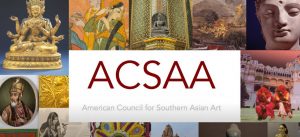
The American Council of Southern Asian Art (ACSAA), a non-profit organization and a community of academics and humanists, condemns the ongoing assault on democratic institutions and intellectual freedoms in India.
Both the Citizenship Amendment Act (CAA), signed on 11 December 2019, and the National Register of Citizens (NRC) Act, to be implemented in 2021, are openly discriminatory laws. We denounce any attempt at exclusion based on religion, caste, gender, race, or sexual identity, and find both laws to be antithetical to the Indian constitution and its democracy. In particular, as researchers and teachers of India’s art and architecture across millennia, we are committed to preserving the rich contributions of Muslims to its visual culture and intellectual life. We see this commitment as directly threatened by the violent, often state-sanctioned, erasure of such contributions, in instances such as the demolition of the Babri Masjid, the occupation of Kashmir, the renaming of cities, and the rewriting of academic curricula along Hindutva lines.
We stand in full support of the students and teachers at Aligarh Muslim University and the Jamia Millia Islamia, following the events of 15 December 2019; at Jawaharlal Nehru University, following events there on 5 January 2020; and everyone currently participating in peaceful protests and demonstrations across the country. We see the brutal attack at JNU—organized and executed by members of the Akhil Bharatiya Vidyarthi Parishad (ABVP), the student faction of the Hindutva organization, the Rashtriya Swayamsevak Sangh (RSS) and, with the ruling Bharatiya Janata Party (BJP), a member of the Sangh Parivar—as one more instance of a widespread denial of the rights of Indian citizens to critique their government peacefully and openly.
The accusations of “anti-nationalism” directed at marginalized communities at these confrontations – particularly Muslims, Dalits, and women – are reminders of the extent to which extremists will go to erode the secular principles on which the country was founded.
To date, there have been no arrests or investigations into the identity of the attackers at JNU, despite indisputable evidence. We deplore the negligence of the Delhi Police, who looked on as the attacks happened, and call for both an immediate investigation and the resignation of JNU’s Vice Chancellor, M. Jagadesh Kumar. Following as it does the instances of police violence at Aligarh Muslim University and Jamia Millia Islamia, as well as long-term interventions including cuts to funding and fee hikes, the JNU attack urgently increases our concern, as part of the global academic community, for public higher education and critical thought in India.
The American Council for Southern Asian Art (ACSAA) is dedicated to advancing the study and awareness of the art of South and Southeast Asia and the Himalayan regions, spanning all periods and forms of artistic production.
Related reading: In Photos: The World’s Largest Democracy Is in Upheaval (Quartz India, December 15, 2019)
Police Fire Tear Gas as Delhi Protesters Decry Citizenship Law (Al Jazeera, December 15, 2019)
I Saw Police Stand by as Masked Men Attacked Students at a Top Delhi University. It Was Yet Another Assault on India’s Intellectuals (Time, January 8, 2020)
Behind Campus Attack in India, Some See a Far-Right Agenda (New York Times, January 10, 2020)
RAAMP Coffee Gathering: Differentiating Visual Arts Admin and Museum Studies Programs
posted Jan 16, 2020
Coffee Gathering: Differentiating Visual Arts Administration and Museum Studies Programs
On Thursday, February 6 at 2pm (EST) we will be online with Bruce J. Altshuler, Director and Professor of Museum Studies at New York University and Sandra Lang, Director and Professor of Visual Arts Administration at New York University to discuss their respective programs. Joining them will be Visual Arts Administration student Laura Busby and Museum Studies student Olivia Knauss.
For participant bios, see the full post on RAAMP.
To join this Coffee Gathering, please email Cali Buckley at cbuckley@collegeart.org.
RAAMP Coffee Gatherings are monthly virtual chats aimed at giving participants an opportunity to informally discuss a topic that relates to their work as academic art museum professionals. Learn more here.
Submit to RAAMP
RAAMP (Resources for Academic Art Museum Professionals) aims to strengthen the educational mission of academic art museums by providing a publicly accessible repository of resources, online forums, and relevant news and information. Visit RAAMP to discover the newest resources and contribute.
RAAMP is a project of CAA with support from the Andrew W. Mellon Foundation and the Samuel H. Kress Foundation.
News from the Art and Academic Worlds
posted Jan 15, 2020
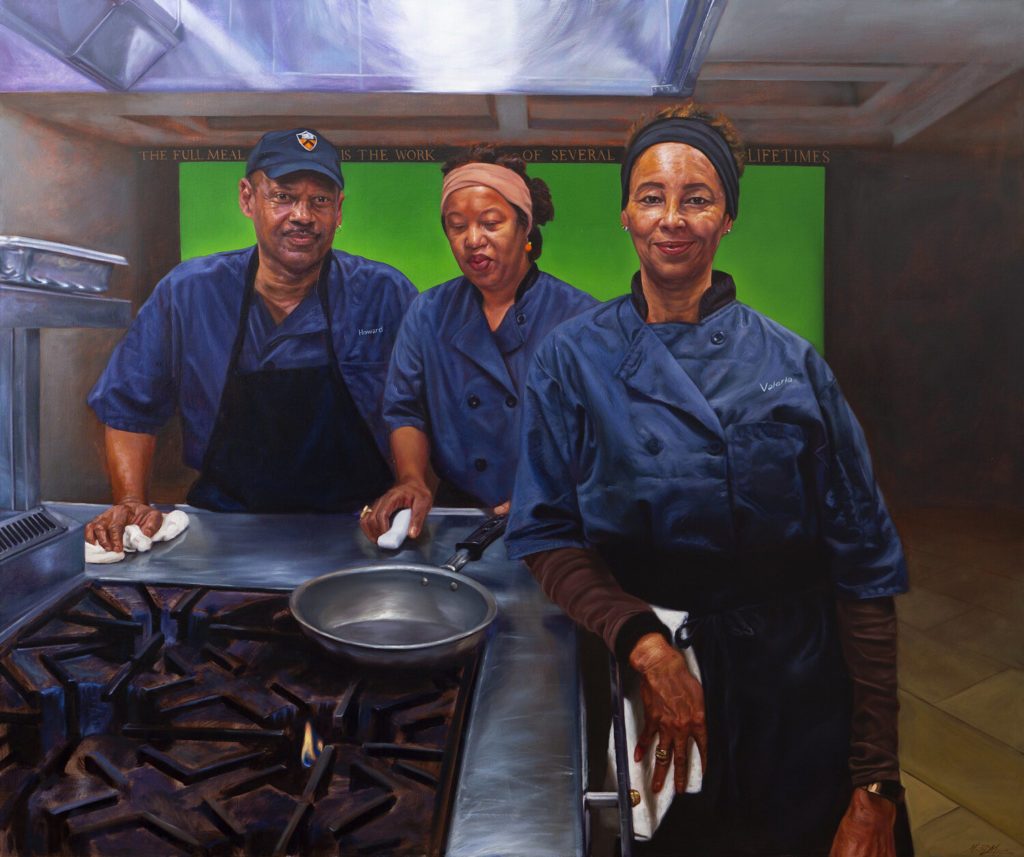
Mario Moore, Several Lifetimes, 2019. Courtesy of the artist.
Want articles like these in your inbox? Sign up: |
New in caa.reviews
posted Jan 10, 2020
Emily Joyce Evans reviews the C/O Berlin exhibition Boris Mikhailov: Before Sleep/After Drinking. Read the full review at caa.reviews.
Lyle Massey considers The “Fabrica” of Andreas Vesalius: A Worldwide Descriptive Census, Ownership, and Annotations of the 1543 and 1555 Editions by Dániel Margócsy, Mark Somos, and Stephen N. Joffe. Read the full review at caa.reviews.
Marcus B. Burke discusses Felipe Pereda’s Crime and Illusion: The Art of Truth in the Spanish Golden Age. Read the full review at caa.reviews.
News from the Art and Academic Worlds
posted Jan 08, 2020
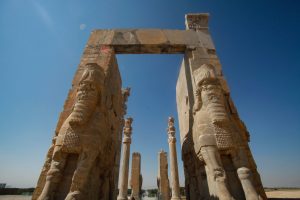
The archaelogical site and ruins of gates and columns of the Persian Achaemenid dynasty ancient capital city of Persepolis. Photo by Nicolas Economou/NurPhoto via Getty Images, via artnet News
Want articles like these in your inbox? Sign up: |
Affiliated Society News for January 2020
posted Jan 07, 2020
Happy New Year! Affiliated Society News shares the new and exciting things CAA’s affiliated organizations are working on including activities, awards, publications, conferences, and exhibitions. See January’s news below.
Interested in becoming an Affiliated Society? Learn more here.
Community College Professors of Art and Art History
Please join the Community College Professors of Art and Art History at this year’s CAA Conference in Chicago for two events on Wednesday, February 12, 2020.
From 12:30 PM – 1:30 PM in the Lobby Level Continental B room, join us for our annual Business meeting and project share. Bring an idea or project to share with your community college colleagues. Following our business meeting (in the same room) is our session, Taking a New Look: Creating Change in the Studio and Art History Classrooms. Co-Chaired by Susan Altman and Monica Anke Hahn, hear Richard J. Moninski, Tyrus R. Clutter, Rachael Bower and Ross McClain talk about creating meaningful change in their studio and art history programs.
Women’s Caucus for Art
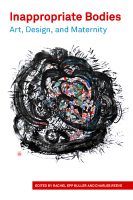
Thursday, February 13, 12:30pm: book presentation and discussion of Inappropriate Bodies: Art, Design, and Maternity, with editors Rachel Epp Buller and Charles Reeve and contributor Niku Kashef
Thursday, February 13, 6:00pm: WCA/CAA panel on Amplifying Inclusion: Intersectional Feminism in Contemporary Curatorial Practice, with presenters Tanya Augsburg, Priscilla Otani, Karen Gutfreund, and Rosemary Meza-DesPlas, with discussant Maria Buszek.
CAA members are also invited to attend WCA exhibitions in Chicago. The Young Women’s Caucus organized Intersectional History at WomanMade Gallery and the National WCA exhibition, Collectively Shifting, is hosted by The Bridgeport Art Center.
New Media Caucus
The New Media Caucus is happy to welcome the following continuing and new board members following a successful 2019-2020 Election Cycle.
Chair of Communication Committee
KT Duffy
Assistant Professor of Art, Northeastern Illinois University
Board Members
Farhad Bayram
Assistant Professor, Indiana State University
Victoria Bradbury
Assistant Professor, The University of North Carolina – Asheville
Meredith Drum
Assistant Professor, School of Visual Arts, Virginia Tech
Zach Duer
Assistant Professor, School of Visual Arts, Virginia Tech
Sue Huang
Assistant Professor, University of Connecticut
Chelsea Thompo
Visiting Professor, Grand Valley State University
The New Media Caucus (NMC) is a 501c3 dedicated to supporting artists and scholars engaged in new media art. More information about the NMC and our mission can be found at newmediacaucus.org.
Society for the History of Collecting
We are looking forward to our debut sessions at CAA in February and will be using our inaugural business meeting to host a conversation about opportunities for research and funding in the field (the Friday lunchtime slot).
We are also excited to announce that the Americas chapter is expanding with Sophia McCabe spearheading a West Coast initiative.
In NY our upcoming events include a curatorial walk-through with Inés Katzenstein of Sur moderno at MoMA (January 8) and a collaboration with Master Drawings New York on Saturday, January 25. Talking Drawings—a conversation amongst four women collectors of works on paper will be moderated by Dr Jennifer Tonkovich of The Morgan Library & Museum. More information can be found here.
Society of Architectural Historians
Are you planning to attend the College Art Association Annual Conference in Chicago? If so, please join SAH’s conversation about two of our most exciting current initiatives, SAH Archipedia and the SAH Data Project, at the SAH Business Meeting on Wednesday, February 12, 12:30–1:30 pm. Pauline Saliga, SAH Executive Director, will discuss the recent launch of SAH Archipedia. This growing, open-access, mobile-friendly online resource will soon provide new opportunities to publish interpretive research about the history of the built environment. Sarah M. Dreller, SAH Postdoctoral Researcher in the Humanities, will answer questions about the purpose, scope, and timeline of the SAH Data Project, a Mellon-funded study that is assessing the status of the field of architectural history in higher education. The project will launch a key component of the data-gathering effort, online surveys for students, faculty, and program chairs/administrators, right before the CAA Annual Conference.
Early Registration is open for the SAH 2020 Annual International Conference in Seattle, Washington, April 29–May 3. Nearly 700 SAH members from around the world are expected to convene at the Renaissance Seattle Hotel to present new research on the history of the built environment, network, and participate in roundtables, seminars, workshops, tours and more. Early registration closes March 3, 2020.
SAH will offer a total of 36 paper sessions at its 2021 Annual International Conference in Montréal, Québec, Canada. The Society invites individuals and those representing SAH chapters and partner organizations to submit a session proposal for the Montréal conference. Since the principal purpose of the SAH annual conference is to inform attendees of the general state of research in architectural history and related disciplines, session proposals covering every time period and all aspects of the built environment, including landscape and urban history, are encouraged. The submission deadline is January 14, 2020.
Visual Resources Association
The Visual Resources Association (VRA) has planned two events for the 2020 Chicago conference and we welcome CAA conference attendees to join us for a full session and open business meeting turned interactive forum.
Both events take place on Wednesday, February 12th, starting with a VRA Business Meeting scheduled midday (free and open to the public), which we have turned into a discussion forum opening with a presentation entitled “From Archive to Classroom: The Use of Omeka and Companion Tools in the Curation of Digital Stories and Exhibits” involving Matt Taylor, Director of the Media and Design Studio, and Rebecca Zorach, Mary Jane Crowe Professor of Art and Art History, as well as their students from Northwestern University. It will be followed by what will surely be an engaging discussion about online exhibitions and other current trends in the field of visual resources.
In the afternoon, a formal session has been organized entitled, “Hands-On to Eyes-On: From Material Collections to Digital Exhibitions“ chaired by Bridget Madden, Associate Director of the Visual Resources Center, in the Department of Art History at the University of Chicago. A distinguished panel of artists, art historians, librarians, museum and information professionals will discuss the hands-on use of materials and museum collections to allow students to apply their knowledge in real-life contexts (full slate below). The presenters will discuss: the use of a materials collection in teaching art history survey courses to studio art and design students; fashion and textile resources transitioning from physical to digital collections for enhanced access; and a two-term curatorial practice course sequenced to design and install a museum exhibition. In all cases, the collections used in teaching are prioritized and sustained, not treated as occasional visits or demonstrations. The role of professional staff supporting these collections and facilitating their use by faculty and students is integral. It will be shown how effective these collaborations can be, including how they can lead to more engaging, active learning experiences in the classroom. The session will take place at 4pm at the Hilton Chicago in the Wilford C room as follows:
1) “Materials in Context: Experiential Learning in Art History” at the Minneapolis College of Art and Design with Allan T. Kohl, Librarian in charge of Visual Resources and Library Instruction, presenting a collection curator’s perspective, partnered with Jessica M. Dandona, Associate Professor of Art History, providing a faculty perspective.
2) “Materiality Made Visible” will be presented by Melanie E. Emerson, Dean of the Library + Special Collections, from the School of the Art Institute of Chicago.
3) “Exhibition in Practice” at the Smart Museum of Art, University of Chicago, will be presented with Leslie Wilson, Curatorial Fellow for Diversity in the Arts, providing “A Perspective from the Classroom” and Berit Ness, Assistant Curator of Academic Initiatives, talking about “Execution in the Museum.”
The Visual Resources Association is a multidisciplinary organization dedicated to furthering research and education in the field of image management within the educational, cultural heritage, and commercial environments (http://vraweb.org/).
For additional information, please contact Maureen Burns, VRA CAA Affiliate Society Representative at moaburns@gmail.com.
Foundations in Art: Theory and Education (FATE)
There is a date change to the original announcement of the FATE Biennial Conference.
18th Biennial Foundations in Art: Theory and Education Conference will be hosted by University of North Carolina Charlotte. Mark your calendars for April 15-17, 2021 and make plans to be there!
Mid-America College Art Association
Invite for new prospective board members:
The Mid-America College Art Association is seeking motivated artists, and art faculty, to become members of an energetic team who provide avenues for fellowship in the arts on the collegiate level. All media are welcome, we give preference to artists that have expertise in Art Finance, Art Non-Profits, Graphic Design, Digital Arts, Art History, Art Administration and Art Therapy, Art Education, Art Interdisciplinary, Art Performance. Please send inquiry and letter of interest and CV to Heather Hertel, MACAA President: heather.hertel@sru.edu.
view our website: www.macaart.org Instagram: midamericacollegeartassoc
SECAC
SECAC 2019: 75th ANNUAL CONFERENCE
In October, SECAC met for the 75th time in Chattanooga, hosted by The University of Tennessee at Chattanooga. 672 members representing 330 institutions participated in 140 sessions. Highlights of the conference included a keynote address by Sharon Louden at the Hunter Museum of American Art, the 2018 SECAC Artist’s Fellowship Exhibition at the ConTemporary Cress Gallery,the SECAC Juried Exhibition, at Stove Works satellite gallery, and the SECAC Mentoring Program.
At the annual business meeting, SECAC President Sandra Reed of Marshall University introduced new members of the Board of Directors: Arkansas, Kevin Cates, University of Arkansas at Little Rock; Florida, Jeff Schwartz, Ringling College of Art and Design; Louisiana, Rachel Stephens, The University of Alabama; Mississippi, Elise Smith, Millsaps College; Tennessee, Christina Vogel, The University of Tennessee at Chattanooga; and At-Large Seat #1, Dennis Ichiyama. Also new to the board are Michael Borowski, Virginia Tech, representing Virginia, and Sunny Spillane, University of North Carolina at Greensboro, serving as an officer in the new role of Secretary.
SECAC 2020 will be hosted by Virginia Commonwealth University in Richmond, October 21–34. Regularly-updated information, and links to calls are published here. The SECAC submissions site is here.
AWARDS PRESENTED AT SECAC 2019
- The SECAC Artist’s Fellowship was awarded to Adrian Rhodes, University of South Carolina, for Blood and Honey.
- Yumi Park-Huntington, Framingham State University in Massachusetts, received the William R. Levin Award for Research in Art History Before 1750 for Monumental Structure, Sacred Landscape, and Cosmology at the Late Formative Period Peruvian Site of Jequetepeque-Jatanca.
- Stephen Mandravelis, The University of Tennessee at Chattanooga, received the William R. Levin Award for Research in Art History Since 1750 for Access to Avenues of Art: Mapping the Cultivation of Rural Art Markets through the American Agriculturalist, 1850-1880.
- The SECAC Award for Excellence in Teaching was presented to Jenny Hager, University of North Florida.
- The SECAC Award for Outstanding Exhibition and Catalog of Contemporary Materials was given to William U. Eiland for Clinton Hill, Georgia Museum of Art, 2018.
- The Georgia Museum of Art received the SECAC Award for Outstanding Exhibition and Catalog of Historical Materials for Crafting History: Textiles, Metals, and Ceramics at the University of Georgia.
- The 2019 SECAC Award for Outstanding Professional Achievement in Graphic Design was presented to Meena Khalili, University of Louisville.
- The 2019 SECAC Award for Excellence in Scholarly Research and Publication was awarded to Peter Scott Brown, University of North Florida, for The Riddle of Jael: The History of a Poxied Heroine in Medieval and Renaissance Art and Culture.
Visit SECAC Awards for details.
Twenty-two graduate students received Gulnar Bosch Travel Awards: Melissa Airy, University of Iowa; Olivia Armandroff, University of Delaware; Alyssa Bralower, University of Illinois at Urbana-Champaign; Lauren Cesiro, Binghamton University; Dominik Eckel, DFK Paris / University of Cologne; Isabel Fontbona Mola, University of Girona, Spain; Dilmar Mauricio Gamero Santos, Temple University; Naghmeh Hachempour, Georgia Southern University; Dana Hogan, Duke University; Julia Katz, Rutgers University-New Brunswick; Ximena Kilroe, CUNY; Julia Kirshaw, Florida State University; Tess McCoy, University of New Mexico; Melissa Miller, University of Arkansas at Little Rock; Jonathan Morgan, Institute for Doctoral Studies in the Visual Arts; Danielle Powell, University of Central Florida; Chris Slaby, College of William & Mary; Sara Anne Stepp, Univeristy of Kansas; Barbara Tyner, Centro de Cultura Casa Lamm, Mexico City; Marina Tyquiengco, University of Pittsburgh; Or Vallah, University of Washington; and Jennifer Vess, University of Iowa.
At the SECAC 2019 Annual Juried Exhibition, Juror Amelia Briggs, Director of David Lusk Gallery, awarded First Place to Anne Herbert, Alabama School of Fine Arts, for Event Horizon; Second Place: to Chung-Fan Chang, Stockton University, for Guangwu’s Land; Third Place to Natalie Harrison, Samford University, for Pastel Tapestry 1; and Honorable Mention to Mary Laube, The University of Tennessee, for Queen Min’s Hair. The Co-Directors’ Award was presented to Ann Moody, University at Buffalo, for Lickety-Split.
American Society of Appraisers
Upcoming educational offerings:
· February 3, 2020 | Fundamentals of Jewelry Appraisal | Tucson, AZ
· February 5, 2020 | Introduction to the Chinese Art Market, Challenges and Opportunities | Webinar
· March 2, 2020 | Fundamentals of Jewelry Appraisal | Carlsbad, CA
· March 16-17, 2020 | Appraising Fine Arts Overview | Chicago, IL
· March 20, 2020 | Personal Property Appraisal Report Writing Update | Reston, VA
· May 30-June 14, 2020 | 9th Annual Summer Appraisal Camp | Purchase, NY
· October 29, 2020 | The Decorative Art and Mechanics of Antique Clocks | Webinar
Historians of Netherlandish Art
CAA CONFERENCE CHICAGO, February 12-15th, 2020:
HNA RECEPTION: Friday, February 14th, between 5:30 and 7 pm. Private Dining Room 4, located on the third floor of the Hilton
HNA SESSION:
Thursday February 13th, 10:30-12:00 pm
Hilton Chicago – Lower Level – Salon C-5: 10
Historians of Netherlandish Art
Joanna Sheers Seidenstein, Harvard Art Museums and Sarah Walsh Mallory, Harvard University
SESSION run by HNA members:
Thursday, February 13th, 6:00-7;30 PM
Hilton Chicago – 3rd Floor – Wilford C
Re-Assessing the Northern European Male Nude
Martha Hollander, Hofstra University and Lisa Rosenthal, University Of Illinois at Urbana-Champaign
JOURNAL OF THE HISTORIANS OF NETHERLANDISH ART:
JHNA has just published a special guest-edited issue on the art of Gerard de Lairesse (Winter 2020, vol. 12:1). The editors include Eric Jan Sluijter (University of Amsterdam Emeritus); Elmer Kolfin (University of Amsterdam); Jasper Hillegers (Salomon Lilian Gallery, Amsterdam); and Marrigje Rikken (Frans Hals Museum, Haarlem).
JHNA has received a grant from the Association of Research Institutes in Art History (ARIAH) to support the development of a hot spot feature for images in the article by Melanie Gifford on Rubens’s Fall of Phaeton, National Gallery of Art, Washington, which appeared in the Summer 2019 issue (vol. 11:2). Watch for this digital feature in Gifford’s essay in 2020 as well as in other essays to come.



